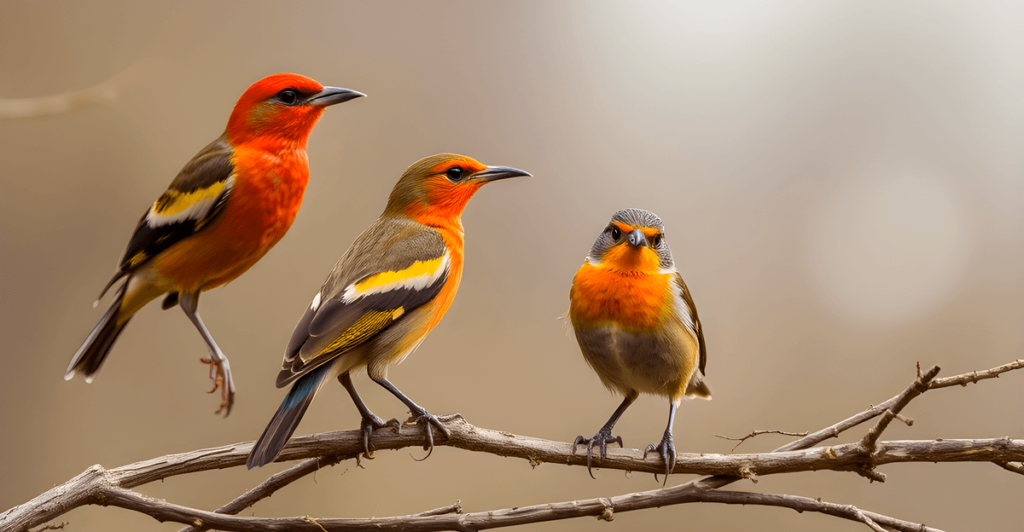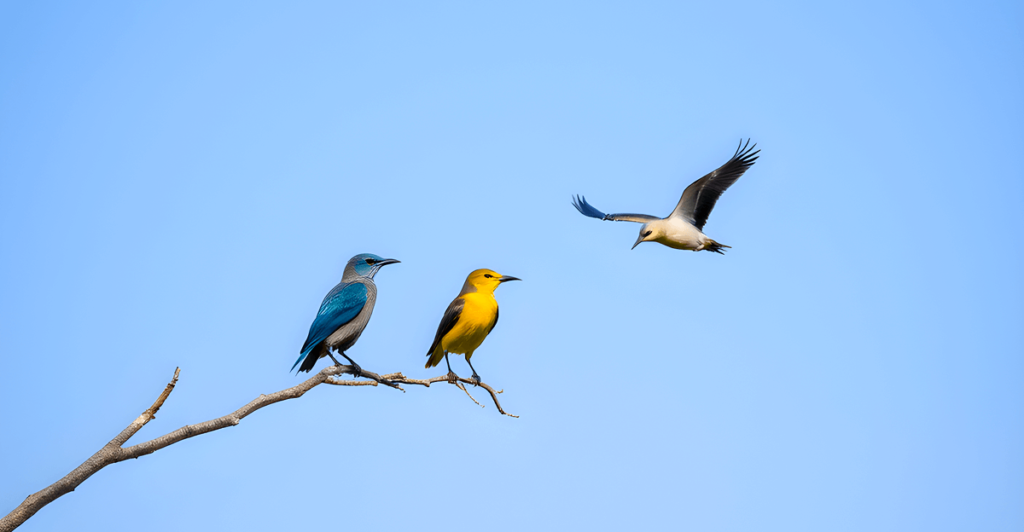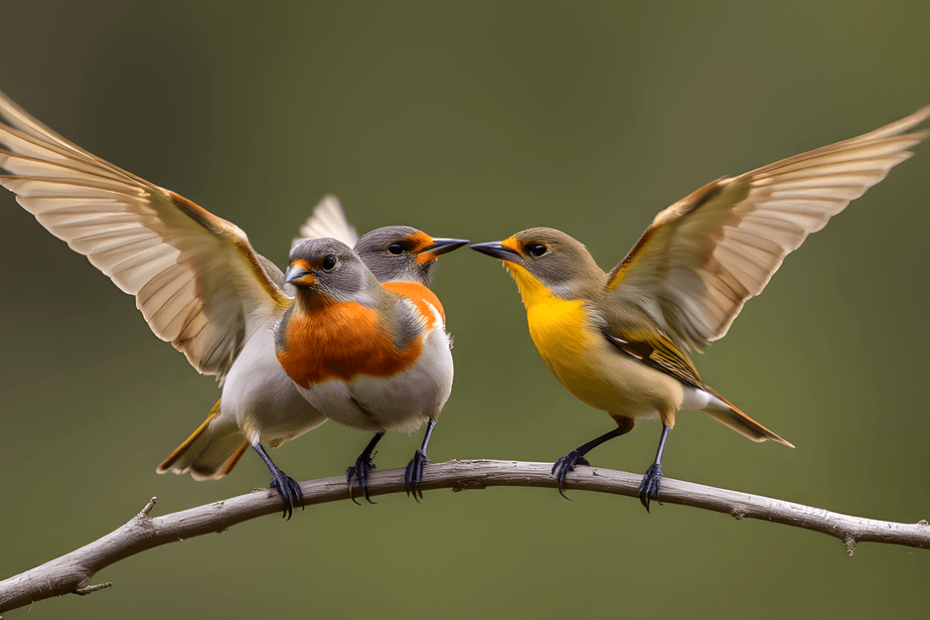Introduction
As a biblical scholar and theologian with years of experience studying ancient texts and their symbolism, I’ve often found myself captivated by the intricate meanings hidden within scripture. One particular symbol that has always fascinated me is the dead bird. Throughout my career, I’ve delved deep into this topic, exploring various biblical passages, consulting with fellow scholars, and even traveling to archaeological sites to gain a fuller understanding of what dead birds symbolize in the Bible.
What Do Dead Birds Symbolize in the Bible? A Personal Journey
My fascination with bird symbolism in the Bible began during my graduate studies when I stumbled upon a peculiar passage in Leviticus. As I read about the laws concerning dead birds, I realized there was much more to unpack than what appeared on the surface. This realization sparked a journey that would take me across continents and through centuries of theological interpretation.
General Symbolism of Birds in the Bible
Before we dive into the symbolism of dead birds specifically, it’s crucial to understand the broader context of bird symbolism in the Bible. In my research, I’ve found that birds often represent:
- Freedom and spirituality: Their ability to fly is often associated with the human soul and spiritual ascension.
- Divine messengers: Birds frequently appear as messengers from God in biblical narratives.
- God’s providence: Jesus uses birds as examples of God’s care for His creation (Matthew 6:26).
- Sacrifice and atonement: Various birds were used in sacrificial rituals.
During a visit to Jerusalem, I had the opportunity to observe modern-day bird life in the region. Watching doves flutter around the Western Wall, I couldn’t help but reflect on how these same species had been viewed by ancient Israelites. It brought the biblical text to life in a way that books alone never could.
Different Types of Birds Mentioned in the Bible
In my studies, I’ve compiled a list of birds specifically named in scripture. Here’s a table summarizing some of the most significant:
| Bird Type | Biblical References | Symbolic Associations |
|---|---|---|
| Dove | Genesis 8:8-12, Matthew 3:16 | Peace, Holy Spirit |
| Eagle | Exodus 19:4, Isaiah 40:31 | Strength, renewal |
| Raven | Genesis 8:7, 1 Kings 17:4-6 | God’s provision, judgment |
| Sparrow | Matthew 10:29-31 | God’s care for the lowly |
| Ostrich | Job 39:13-18 | Foolishness, abandonment |
This table is just a glimpse into the rich tapestry of bird symbolism in the Bible. Each of these birds carries its own set of meanings, which can shift depending on the context – whether the bird is alive or dead.
The Concept of Death in Biblical Context
To truly understand what dead birds symbolize in the Bible, we must first grasp the biblical concept of death. This is a topic I’ve spent considerable time exploring, not just in academic settings, but also in pastoral work, comforting those who have lost loved ones.

Biblical Perspectives on Death
In the Bible, death is viewed through several lenses:
- Physical cessation of life: The most straightforward understanding.
- Spiritual separation from God: Often referred to as the “second death” in the New Testament.
- Transitional state: A passage from earthly existence to eternal life or judgment.
- Enemy to be conquered: In Christian theology, Christ’s resurrection is seen as a victory over death.
During my time counseling bereaved families, I’ve often drawn upon these biblical perspectives to offer comfort and hope. The multifaceted nature of death in scripture provides a rich foundation for understanding the symbolism of dead birds.
Symbolism of Death in the Old and New Testaments
In my comparative studies of the Old and New Testaments, I’ve noticed some interesting shifts in how death is portrayed:
Old Testament:
- Often seen as the end of existence or a shadowy afterlife (Sheol)
- Sometimes viewed as divine punishment for sin
- Occasionally used as a metaphor for spiritual alienation from God
New Testament:
- More emphasis on death as a transition to eternal life
- Christ’s death and resurrection central to the narrative
- Death of the “old self” seen as necessary for spiritual rebirth
These varying perspectives on death provide crucial context for interpreting the symbolism of dead birds in different parts of the Bible.
Dead Birds in the Bible: Direct References
In my years of study, I’ve come across several direct references to dead birds in the Bible. Each of these passages has its own nuances and contextual considerations.
Specific Mentions of Dead Birds in Scripture
One of the most notable mentions of dead birds comes from Leviticus 14:4-7, which describes a purification ritual for leprosy:
“The priest shall order that two live clean birds and some cedar wood, scarlet yarn and hyssop be brought for the person to be cleansed. The priest will then give the order to kill one of the birds over fresh water in a clay pot. Then he is to take the live bird and plunge it into the blood of the bird that killed it, together with the cedar wood, the crimson yarn, and the hyssop. was killed over the fresh water. He will spray the person to be cleansed of the defiling sickness seven times before declaring them clean. The live bird is thereafter to be released by him into the open fields.”
This passage has always struck me as particularly significant. During a visit to a Samaritan community in Israel, I had the rare opportunity to witness a similar ritual (though not involving leprosy). The stark contrast between the dead bird and the live one released into the wild left a lasting impression on me, vividly illustrating the biblical themes of death, purification, and new life.
Context and Interpretation of These Passages
In interpreting passages like the one from Leviticus, it’s crucial to consider the cultural and religious context of ancient Israel. The use of birds in purification rituals points to several symbolic meanings:
- Atonement: The death of one bird represents the “death” of the person’s impurity.
- Cleansing: The sprinkling of blood symbolizes purification.
- New life: The release of the live bird represents the person’s new, clean state.
These themes of death, cleansing, and new life recur throughout the Bible, and dead birds often serve as powerful symbols within this framework.
Symbolic Interpretations of Dead Birds in the Bible
Throughout my career, I’ve encountered various interpretations of what dead birds symbolize in the Bible. While these can vary depending on the specific context and the type of bird involved, there are some common threads.
Death and Mortality
Perhaps the most straightforward interpretation is that dead birds symbolize the reality of death and the fragility of life. In Matthew 10:29, Jesus says:
“Are not two sparrows sold for a penny? But none of them will ever fall to the earth without the protection of your Father.
This passage has always moved me deeply. During a particularly difficult period in my life, when I was grappling with the loss of a loved one, I came across a dead sparrow on my morning walk. It struck me how this tiny creature, seemingly insignificant, was still known and cared for by God. This experience brought the biblical text to life for me in a profound way, illustrating how even in death, we are not outside of God’s notice and care.
Divine Judgment or Punishment
In some biblical contexts, dead birds can symbolize divine judgment. For example, in Jeremiah 12:9, God says:
“Has not my inheritance become to me like a speckled bird of prey that other birds of prey surround and attack? Go and gather all the wild beasts; bring them to devour.
This imagery of birds being attacked and devoured is used to represent God’s judgment on His people. During a study trip to the Middle East, I observed the behavior of birds of prey, which gave me a new appreciation for the vivid and somewhat unsettling nature of this metaphor.
End of a Spiritual Journey
In some interpretations, a dead bird can symbolize the end of a spiritual journey or the completion of a life’s purpose. This idea resonates with passages like 2 Timothy 4:7, where Paul says:
“I have fought the good fight, I have finished the race, I have kept the faith.”
While this passage doesn’t mention birds directly, the concept of completing one’s spiritual journey is similar to how some interpret the symbolism of a dead bird.

Sacrifice and Atonement
As we saw in the Leviticus passage earlier, dead birds often symbolize sacrifice and atonement in the Bible. This symbolism is particularly poignant in light of Christ’s ultimate sacrifice. During a communion service I led, I used the image of a sacrificed bird to help the congregation connect with the ancient roots of our faith and the profound meaning of Christ’s death.
Impurity and Uncleanliness
In Levitical law, dead birds are often associated with impurity. For instance, Leviticus 11:13-19 lists several birds that are considered unclean. Coming into contact with their carcasses would render a person ritually unclean.
During an archaeological dig in Israel, I had the opportunity to examine ancient mikvehs (ritual baths) used for purification. This tangible connection to ancient purification rituals deepened my understanding of how seriously the concepts of cleanness and uncleanness were taken in biblical times.
Dead Birds in Biblical Prophecies and Visions
Some of the most intriguing mentions of dead birds in the Bible occur in prophetic and apocalyptic literature. These passages often use striking imagery to convey complex spiritual truths.
Prophetic Use of Dead Bird Imagery
One notable example comes from Revelation 19:17-18:
“And I saw an angel standing in the sun, who cried in a loud voice to all the birds flying in midair, ‘Come, gather together for the great supper of God, so that you may eat the flesh of kings, generals, and the mighty, of horses and their riders, and the flesh of all people, free and slave, great and small.'”
While this passage doesn’t explicitly mention dead birds, the imagery of birds feasting on flesh implies death and judgment. When I first encountered this passage as a young theology student, I found it disturbing. However, as I’ve grown in my understanding of apocalyptic literature, I’ve come to appreciate how such vivid imagery serves to convey the seriousness of divine judgment.
Interpretation of These Prophecies by Biblical Scholars
In my discussions with other scholars and in my own research, I’ve found that interpretations of prophetic passages involving dead birds generally fall into a few categories:
- Literal interpretations: Some scholars believe these prophecies will be fulfilled exactly as described.
- Symbolic interpretations: Others see the bird imagery as symbolic of broader spiritual truths.
- Historical interpretations: Some argue that these prophecies were fulfilled in past historical events.
- Continuous fulfillment: This view suggests that these prophecies have multiple fulfillments throughout history.
My own view has evolved over the years. While I initially leaned towards a more literal interpretation, my studies and experiences have led me to appreciate the rich symbolism and multiple layers of meaning in these prophetic passages.
Cultural Context: Dead Birds in Ancient Near Eastern Beliefs
To fully understand what dead birds symbolize in the Bible, it’s crucial to consider the broader cultural context of the ancient Near East. During my doctoral studies, I had the opportunity to study ancient Mesopotamian and Egyptian texts, which provided fascinating insights into how Israel’s neighbors viewed birds and death.
Surrounding Cultures’ Beliefs About Dead Birds
In many ancient Near Eastern cultures, birds were associated with the divine realm. For example:
- In ancient Egypt, the ba (often depicted as a bird with a human head) represented an aspect of the human soul.
- In Mesopotamian mythology, the goddess Inanna was sometimes associated with the dove.
- In Canaanite religion, birds often served as messengers between gods and humans.
During a research trip to the British Museum, I spent hours examining ancient Near Eastern artifacts depicting birds in religious contexts. The prevalence of bird imagery across cultures underscored for me the significance of birds in ancient religious thought.
How These Beliefs Might Have Influenced Biblical Symbolism
While the Bible often presents a counter-cultural message, it’s clear that Israelite thinking was influenced by the surrounding cultures. Some possible influences on biblical bird symbolism include:
- The association of birds with the divine realm
- The use of birds in divination practices (which the Bible generally condemns)
- The symbolism of birds in creation and flood stories
However, it’s important to note that the Bible often reinterprets or subverts cultural symbols to convey its unique theological message. For instance, while other cultures might have seen certain birds as divine, the Bible presents them as created beings under God’s authority.
Specific Types of Dead Birds and Their Meanings
In my studies, I’ve found that different types of birds can carry distinct symbolic meanings when they appear dead in biblical contexts.
Doves and Pigeons
Doves and pigeons are often associated with peace, purity, and the Holy Spirit in the Bible. When these birds appear dead, it can symbolize:
- The loss of peace or innocence
- The need for purification or renewal
- In sacrificial contexts, atonement and reconciliation with God
I once visited a dove release ceremony at a wedding, and it struck me how the living doves symbolized new beginnings and hope. The contrast with the symbolism of dead doves in scripture was profound.
Ravens and Crows
Ravens are often associated with God’s provision (as in the story of Elijah) or with judgment. A dead raven might symbolize:
- The end of a season of provision
- The fulfillment of judgment
- In some contexts, the defeat of dark or ominous forces
Eagles and Other Birds of Prey
Eagles in the Bible often represent strength, renewal, and divine protection. A dead eagle might symbolize:
- The fall of a mighty nation or leader
- The need for spiritual renewal
- The limitations of earthly power
During a birdwatching expedition in Israel, I observed eagles soaring over the desert landscape. The majesty of these birds in flight gave me a new appreciation for why they feature so prominently in biblical imagery.
Sparrows and Small Birds
Small birds like sparrows are often used in the Bible to represent God’s care for even the most insignificant creatures. A dead sparrow might symbolize:
- The reality of death touching even the lowliest creatures
- God’s awareness of every detail of creation
- In some contexts, the seeming absence of God’s protection
Dead Birds in Biblical Law and Rituals
My research into ancient Israelite religious practices has shed light on how dead birds were viewed in biblical law and rituals.
Dietary Laws Concerning Dead Birds
Leviticus 11 provides a detailed list of birds that were considered unclean and not to be eaten. This includes birds of prey, seabirds, and various other species. The text states:
“These are the birds you are to regard as unclean and not eat because they are unclean: the eagle, the vulture, the black vulture…” (Leviticus 11:13)
The prohibition against eating these birds, especially when found dead, was likely related to both health concerns and symbolic/religious reasons.

Use of Birds in Sacrificial Rituals
Birds, particularly doves and pigeons, played a significant role in Israelite sacrificial rituals. For example:
- Burnt offerings (Leviticus 1:14-17)
- Sin offerings (Leviticus 5:7-10)
- Purification rituals (Leviticus 14:4-7)
During a visit to the remains of an ancient Israelite altar, I was struck by the tangible connection to these ancient practices. The worn stone where countless birds had been sacrificed was a powerful reminder of the centrality of sacrifice in biblical religion.
Cleanliness and Uncleanliness Associated with Dead Birds
Contact with dead birds, like contact with other dead animals, could render a person ritually unclean. Leviticus 11:24-25 states:
“You will make yourselves unclean by these; whoever touches their carcasses will be unclean till evening. Whoever picks up one of their carcasses must wash their clothes, and they will be unclean till evening.”
This emphasis on cleanliness and uncleanliness has far-reaching implications for understanding biblical symbolism and theology.
Modern Interpretations of Dead Bird Symbolism in the Bible
In my work as a pastor and biblical scholar, I’ve encountered a wide range of modern interpretations of what dead birds symbolize in the Bible.
Contemporary Christian Perspectives
Many contemporary Christians interpret dead bird symbolism in light of New Testament themes:
- Sacrifice: Connecting the death of birds in Old Testament rituals to Christ’s sacrifice
- God’s sovereignty: Using Jesus’ teachings about sparrows to emphasize God’s control over life and death
- Spiritual warfare: Some see dead birds as symbols of spiritual attack or demonic influence
In my pastoral work, I’ve found that helping people connect ancient symbolism to their contemporary faith journey can be deeply meaningful.
Jewish Interpretations
In discussions with my Jewish colleagues, I’ve learned that modern Jewish interpretations often focus on:
- The ethical treatment of animals
- The symbolic meaning of different bird species in Jewish tradition
- The role of birds in purification rituals and what this teaches about spiritual cleansing
Conclusion
In conclusion, the symbolism of dead birds in the Bible is multifaceted, representing themes of death, sacrifice, judgment, and renewal. Whether viewed through the lens of purification rituals, divine judgment, or the fragility of life, these symbolic references carry deep spiritual meaning. Across both the Old and New Testaments, dead birds serve as powerful metaphors for humanity’s relationship with God, illustrating the need for atonement and the hope of spiritual renewal. Understanding these symbols within their cultural and theological contexts offers us profound insights into biblical teachings and their relevance today.
